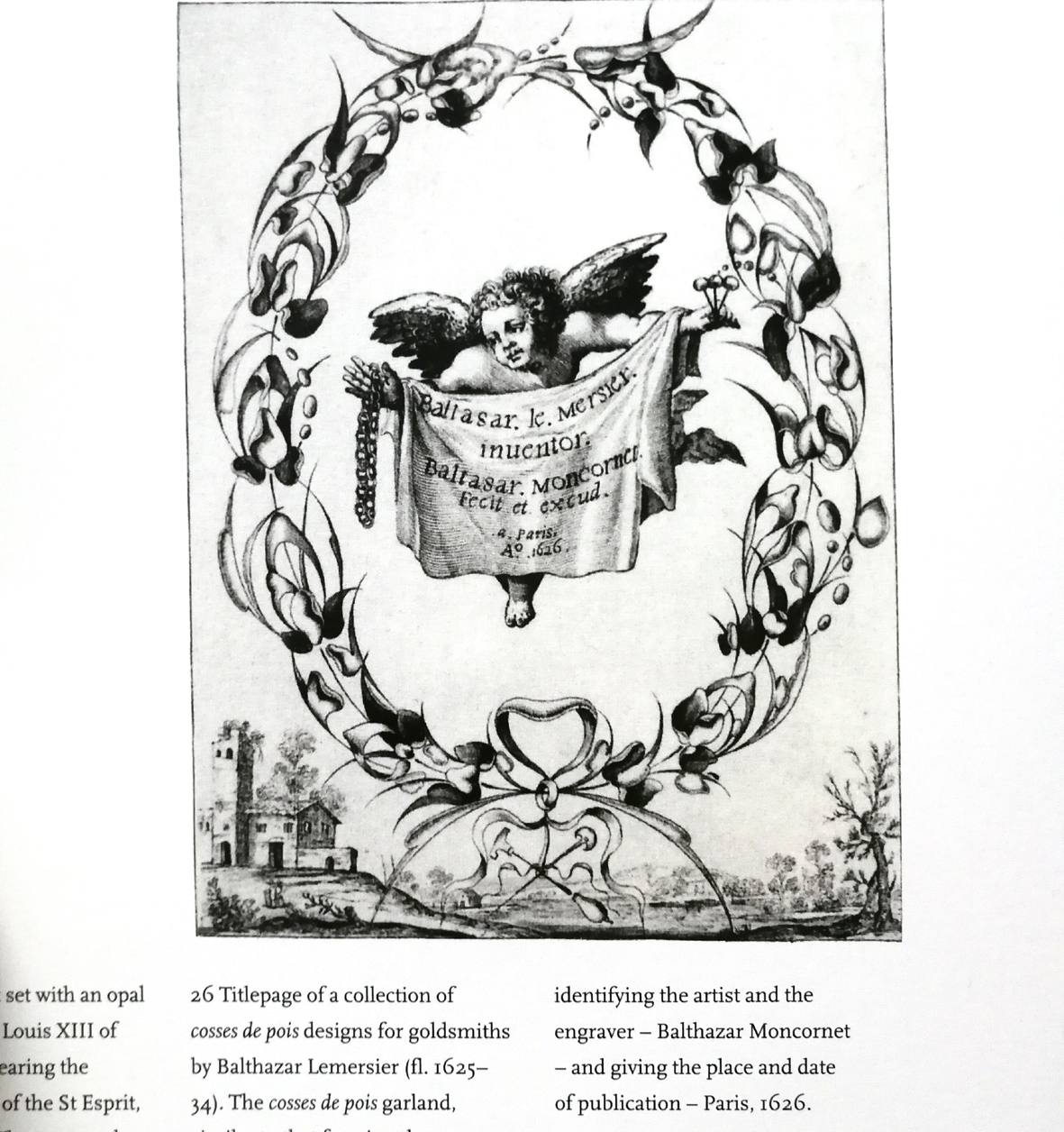




Super-rare 17th century diamond and lapis lazuli jewel. Probably French, circa 1620-30
In “cosse de pois” or, in English, “pea-pod” style, the bold design set throughout with very fine quality table-cut diamonds and centred with a vibrant oval panel of royal blue lapis. This panel is original and perhaps once had painted decoration, but, if this was the case, there is no trace of it now. The outer edges have a black enamelled border
The only source of diamonds in the 17th century was India, and their use was reserved for the highest of classes. To think of these diamonds, coming from India to Western Europe, and the lapis coming from Afghanistan, is mind-boggling, not to mention the fact that it survived all this time.
The jewel would have been stitched in place, and it has not, so far, had any modern adaptation, but it would be possible to do sympathetically. There is a row of four loops on one side of the reverse, these may have been for pendants as the example shown here from the Victoria and Albert Museum
45mm x 40mm (1 3/4” x 1 1/2”)
Sold
Super-rare 17th century diamond and lapis lazuli jewel. Probably French, circa 1620-30
In “cosse de pois” or, in English, “pea-pod” style, the bold design set throughout with very fine quality table-cut diamonds and centred with a vibrant oval panel of royal blue lapis. This panel is original and perhaps once had painted decoration, but, if this was the case, there is no trace of it now. The outer edges have a black enamelled border
The only source of diamonds in the 17th century was India, and their use was reserved for the highest of classes. To think of these diamonds, coming from India to Western Europe, and the lapis coming from Afghanistan, is mind-boggling, not to mention the fact that it survived all this time.
The jewel would have been stitched in place, and it has not, so far, had any modern adaptation, but it would be possible to do sympathetically. There is a row of four loops on one side of the reverse, these may have been for pendants as the example shown here from the Victoria and Albert Museum
45mm x 40mm (1 3/4” x 1 1/2”)
Sold